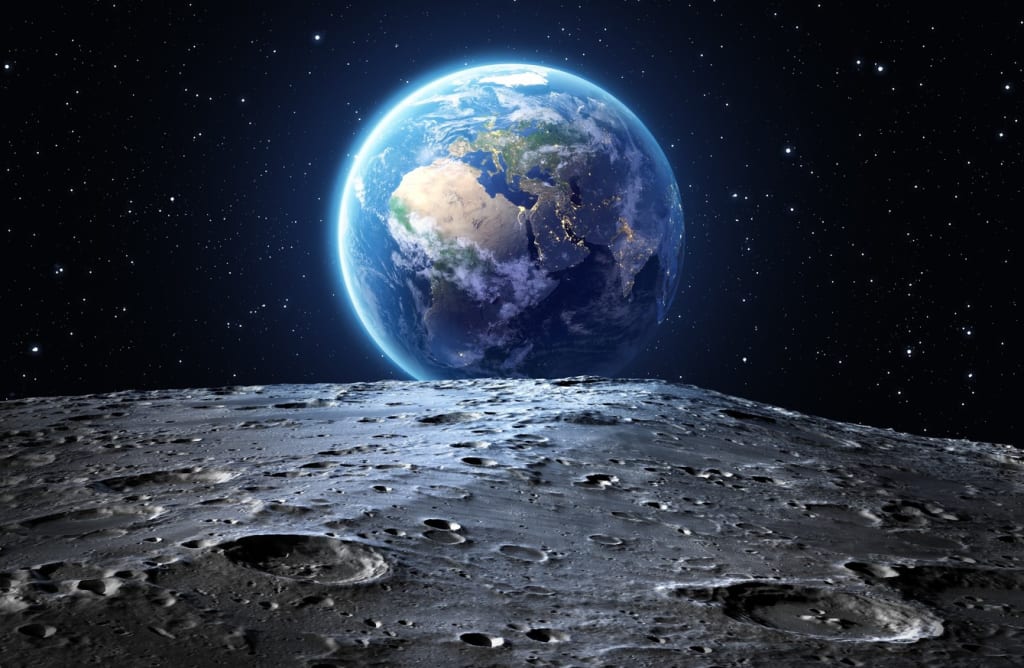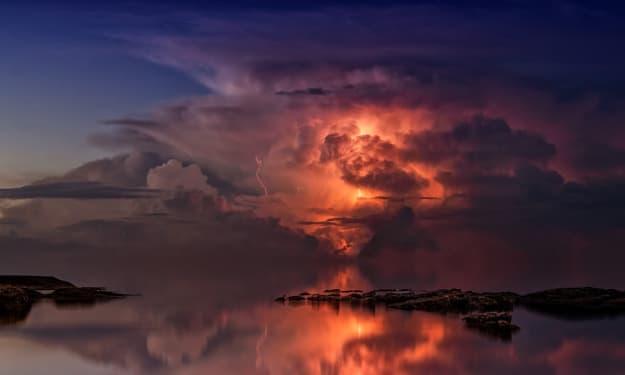
Life in moon
While the moon now appears to be a waste and full of impact limits, new research suggests it may have once supported life. According to Dirk Makuch of Washington State University and Ian Crawford of the University of London, there were two occasions when the moon formed where it could be on the moon for life. In today's world of moons, life is impossible, even though life may have originated from a few letters introduced during the Cold War by American and Soviet lunar missions.
People have long wondered what kind of creatures and humans could live on Earth and the Moon. The concept of extraterrestrial life has even penetrated science fiction. Wells' 1901 novel The First Man on the Moon offers some of these opportunities.
The authenticity of the stories of their time speaks to the idea of living on the moon in the 19th century. Although these humorous reports have turned out to be fraudulent, they do indicate that there was a reasonable belief at the time that there could be life on the moon. Even as Apollo's missions focused on lowering the moon, the thoughtless concept of an extraordinary, intelligent life on this planet remained a popular tradition.
Galileos' telescopic viewing of the Earth and the Moon had a profound effect on the imagination of other planets. However, I believe that the arrival of the Moon has also influenced the public perceptions of alien life.
It can be tempting to discover microfossils or unknown life forms on the moon. Let us not be surprised by the fact that the life contained in our waste can live on our moon.
Since the arrival of Apollo 11 months, we have taken microbial life on Earth and the ecosystem where it is. We remember the mysterious images of NASA where the Earth came out of the moonlight like a giant friendly planet as if it were a living person looking at images.
This means that bags of human paper, urine, food waste, vomit, and other garbage bags containing the biological health of the moon are a natural and unintended test.
If the microbial life of the moon could live at rest, this means that the bacteria could live longer in the deep space, travel around the world and spread life along the way. Like Earth, the moon has received most of its water from frozen rocky asteroids. Asteroids that hit the ground transport the old bacteria on the surface of the Moon. The short life span of the moon is not long enough for us to evolve into more complex single-celled organisms.
If you asked scientists today what the best place to look for life is in the solar system, they might say Enceladus or at least one of the moons of Jupiter or Saturn. Europe, the moon of Jupiter, and Enceladus, the moon of Saturn, both have an underwater ocean with the smallest species of life. Scientists have determined that Jupiter's moon, Europa, is a dense ocean with salty seas, favorable conditions for life.
Future astronauts, Bridenstine, said they could dig up ice and use it as a way to support life in their lunar eclipses. One idea is to use the face of the moon as a fishing net, to collect objects between the stars over time to provide life-building blocks in the habitats of other stars.
Lingam suggested that one way to test the viability of life was to bury layers of dense rock and drill the equator of Mars or the moon to find tropical hotspots. The Lunar Rock brought to Earth during the Apollo mission was contaminated by terrestrial life and is not an appropriate alternative to the lunar exploration base. In future trips, they can also visit the moon, and some researchers believe that taking samples from miles with dates of volcanic activity could provide clues to water and life.
Scientists sponsored by the US space agency NASA are investigating how small impacts and objects in space affect the face of the moon Jupiter Europa and how they can affect the search for signs of life. Research could help JPL scientists design a Europa Clipper spacecraft in their quest for life on the moon. The team of scientists says they have found a way to find out if life could exist in distant places, including the moon and Mars, and whether it should look at holes in the surface.
In the exploration of the concept of life on Earth and the Moon, emerges an understanding from the interaction between thought, complex thinking, and our ever-changing understanding of the universe.
At the end of each lesson, you want your students to be able to describe the life of the environment around them based on what they know about the features of the moon. Explain how the life of the Moon is different from that of the earth. He accepted the sacred precepts when he spoke about life on the moon, and his arguments went from physical to religious.
About the Creator
Aayush Alphonz
Hello, I am producer from Nepal






Comments
There are no comments for this story
Be the first to respond and start the conversation.